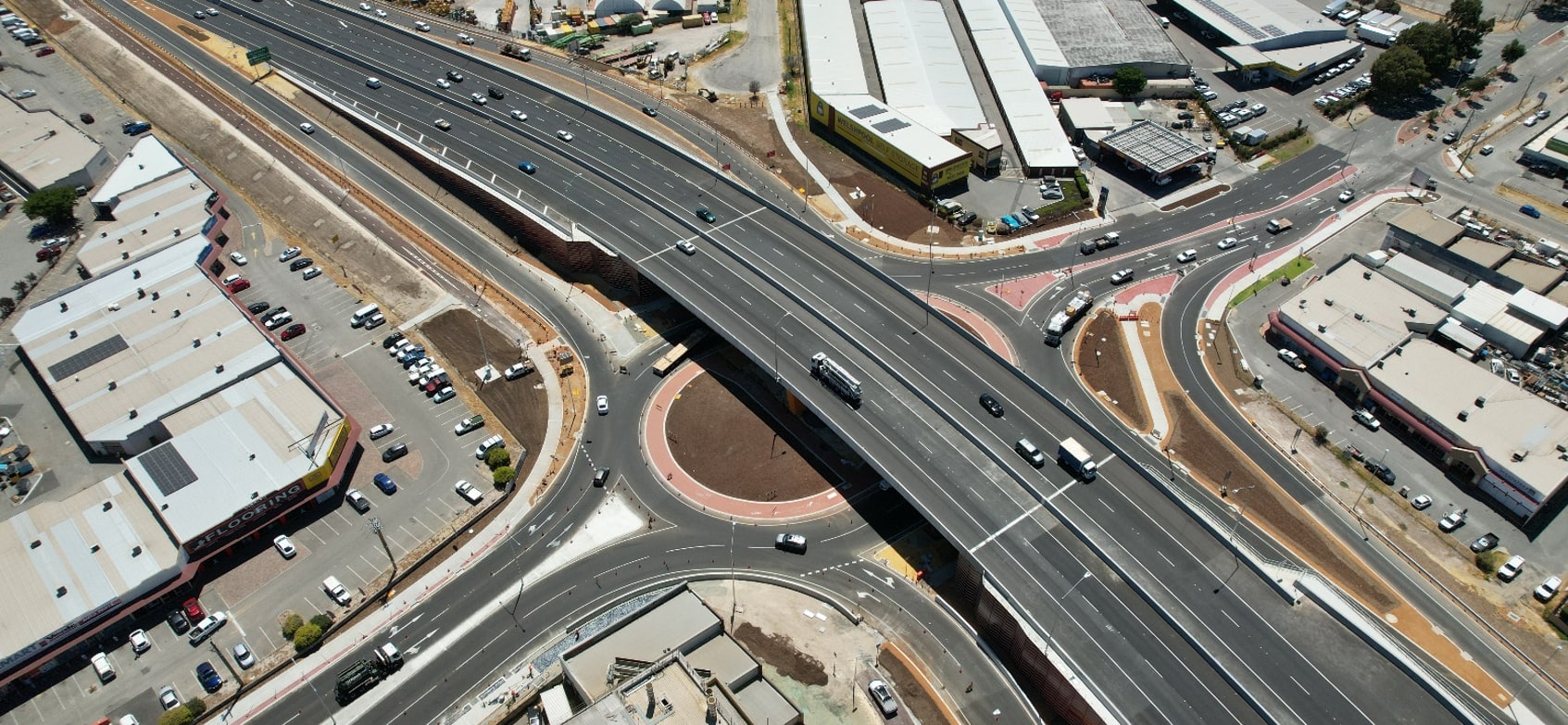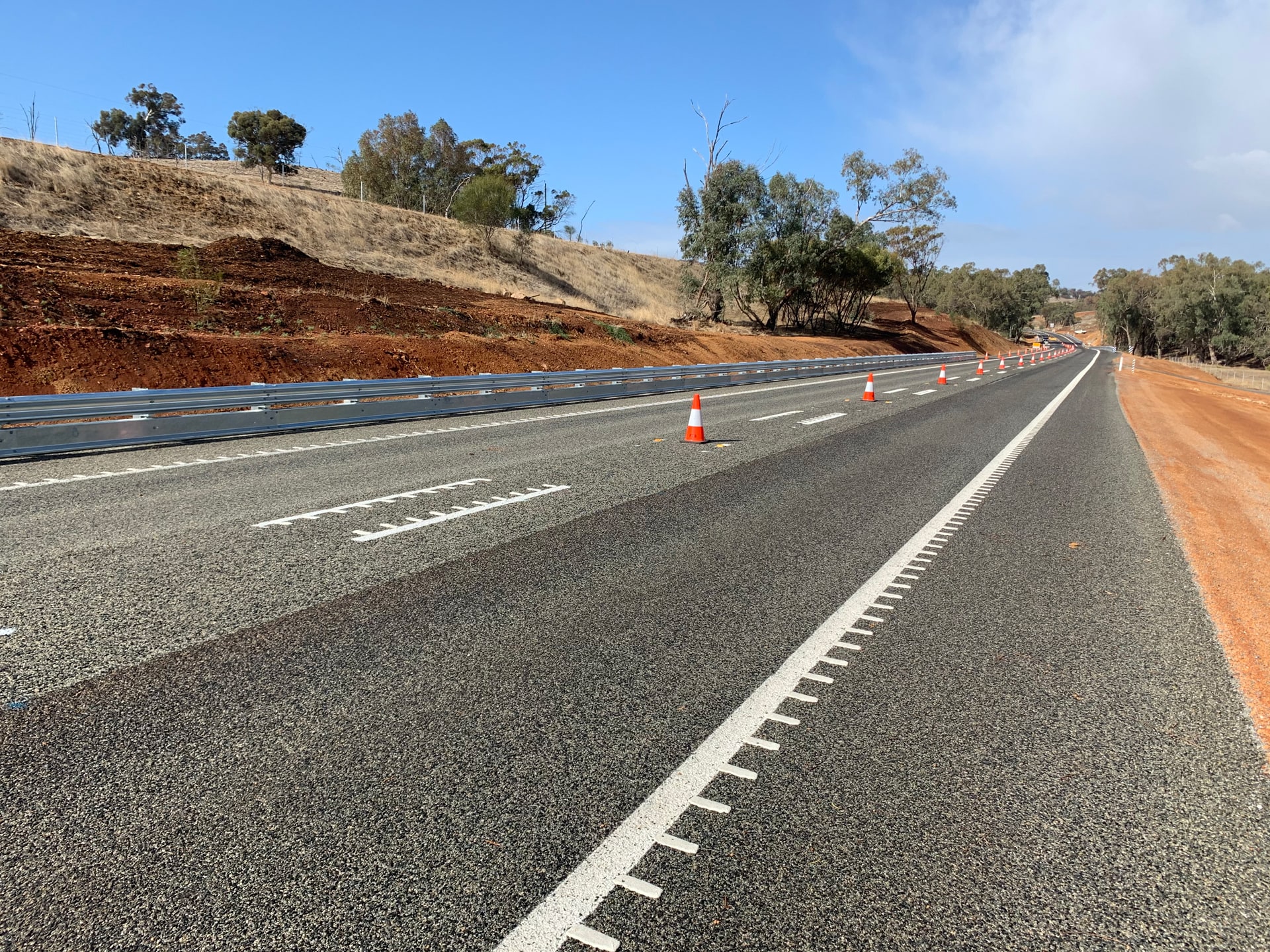Boosting safety at one of our busiest intersections
The Leach Highway and Welshpool Road Interchange project has addressed congestion and improved safety at what was once Perth's most dangerous and second busiest intersection.
The result of the interchange project is shorter, safer, more predictable journeys for residents, commuters, and the freight industry.
At least 50,000 vehicles travel through the intersection daily with Leach Highway forming part of our Principal Road Freight Network, serving key commercial activity centres such as Perth Airport and the Kewdale Freight Terminal. There were 224 crashes recorded at the intersection over a five-year period of which 204 were rear-end crashes.
The project included a new bridge on Leach Highway, carrying traffic over the Welshpool Road intersection, which was reconfigured as a new roundabout beneath the bridge. A second bridge was constructed on Leach Highway to allow the section of the highway passing over the Armadale rail line to be widened, while a new Principal Shared Path for cyclists and pedestrians was constructed between Sevenoaks Street and Orrong Road.
The project features striking artwork on the Armadale Line railway bridge abutments, developed through consultation with the local Traditional Owners and Whadjuk Nyungar artist Justin Martin. It also includes extensive artwork on the Welshpool Road bridge abutments, which drew inspiration from the industrial setting in which the project is located.
Construction on the new interchange was completed in March 2023 and was delivered on-time by the Leach Welshpool Alliance comprising Main Roads and Western Australian companies BG&E, Georgiou, and Golder Associates.
The project area was characterised by a high traffic-environment and had significant interface requirements with commercial and light industrial businesses, residential properties, and a busy passenger rail line. The Alliance overcame these challenging constraints through a flexible and collaborative approach to stakeholder engagement, coupled with exceptional traffic management planning and implementation.
The project was also successful in designing and delivering a pilot program focusing on training increasing the engagement, development, and retention of long-term unemployed people. As part of the program 17 participants completed their Certificate II and seven were subsequently employed on the project full-time whilst undertaking their apprenticeships.




